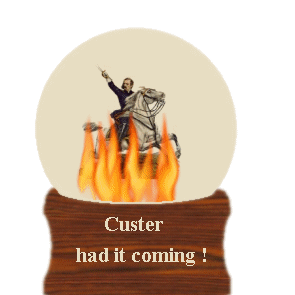Rerelease of book takes readers on tour of conflict, battles
Welch himself, who died in 2003, was an American Indian, part of the Blackfeet and Gros Ventre tribes, and "Killing Custer" enables him to tell the story from an empathetic rather than sympathetic standpoint. His research is spot-on, including interviews from American Indians and white soldiers, pictures, drawings and even Custer's last letter. Details of American Indian rituals, vision quests and beliefs permeate the text, giving the reader a greater understanding of why the Plains Indians of the time acted the way they did. Mutilating the corpses of enemies was to ensure that those who meant them harm in this life would not be able to cause them any harm in the next life, where they would all inevitably go. By seeking to eliminate the prejudices and change the perceptions of this time period, "Killing Custer" succeeds.


3 comments:
Isn't it funny how you have to peel the layers of this onion?
For a more Accurate account of this, why not listen to the Cheyenne History?
check this out: http://helenair.com/articles/2005/06/28/montana_top/a01062805_02.txt
and: http://www.ncheyenne.net/tribalreport/June/The%20People%20page%209.htm
and:
in the texan:http://media.www.dailytexanonline.com/home/index.cfm?event=displayArticleComments&ustory_id=7f372615-6414-4181-ab62-c81b44505035
later,
Chris
Rob, thanks for your imput on that artist sight, you should see it now..
I'm glad you said there's no proof of your "Custer survived" claim, Russ. You saved me the trouble of saying it. ;-)
I'd treat Native sources the same as any other sources if I'd actually heard them claim Custer survived Little Big Horn. But I read Killing Custer by James Welch (Blackfeet/Gros Ventre) and he didn't mention this alleged occurrence. So give us a source--not your interpretation of a source--and I'll consider it.
Post a Comment